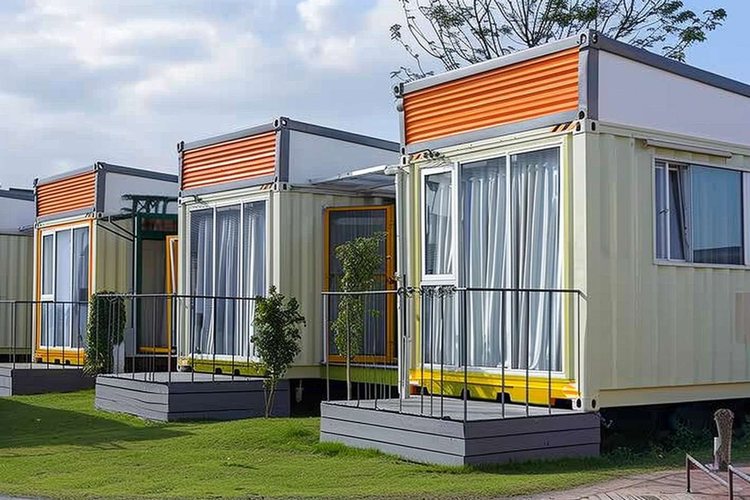Granny Pods: Compact Living Solutions for Older Adults in the UK
Granny pods are small, self-contained living units designed to provide older adults with independent and safe accommodation. In the UK, these compact homes offer practical features such as accessible layouts, safety adaptations, and proximity to family members. They can be installed in gardens or on private property, providing a flexible housing option that supports aging in place while maintaining privacy and comfort.

Granny pods are emerging as a practical housing solution for older adults across the United Kingdom. These compact, self-contained living units are typically installed in the garden or property of family members, allowing seniors to maintain independence while staying close to loved ones who can provide support when needed. As housing costs rise and the population ages, these purpose-built dwellings represent an innovative approach to addressing the changing needs of older adults and their families.
What Are Granny Pods and How Do They Work in the UK?
Granny pods, also known as accessory dwelling units (ADUs) or garden annexes in the UK, are small, self-contained living spaces designed specifically with older adults in mind. These structures typically range from 30 to 70 square meters and include essential living areas: a bedroom, bathroom, kitchen, and living space. They’re built with accessibility features such as wider doorways, grab bars, and level entrances to accommodate changing mobility needs.
In the UK context, these structures must comply with planning regulations, which vary by local authority. Many granny pods fall under “permitted development” rights if they meet specific criteria, though some situations may require planning permission. The structures can be permanent fixtures or temporary modular units that can be removed when no longer needed, offering flexibility for changing family circumstances.
Benefits of Compact Housing for Seniors in the UK
Compact housing solutions like granny pods offer numerous advantages for older adults in the UK. Perhaps most significantly, they enable seniors to maintain independence while having family support nearby—bridging the gap between complete autonomy and care home living. This arrangement can delay or eliminate the need for institutional care, which many older adults prefer to avoid.
These dwellings also address financial concerns. With UK care home costs averaging £600-£800 per week for residential care and up to £1,000 for nursing care, granny pods represent a potentially cost-effective alternative. The initial investment can be recouped over time through savings on care home fees or rental costs.
Additionally, compact housing helps combat loneliness and isolation—significant issues affecting older adults in the UK. Being physically close to family members facilitates regular interaction and support, contributing to better mental health and overall wellbeing for seniors.
Planning and Legal Considerations for Granny Pods UK
Navigating the regulatory landscape for granny pods requires careful attention to UK-specific rules. While the government has generally become more supportive of multigenerational living solutions, local planning authorities maintain significant control over what can be built.
Most garden annexes require planning permission, though some may qualify under permitted development rights if they meet specific criteria: typically single-story, positioned to the rear of the property, and occupying less than 50% of the garden space. The structure must be ancillary to the main dwelling and not operated as a separate residence with its own address.
Council tax implications also warrant consideration. In most cases, granny pods are considered part of the main property for council tax purposes, but this can vary by local authority. Some councils may view them as separate dwellings subject to their own council tax band, particularly if they have separate utility connections or operate independently.
Building regulations approval is mandatory regardless of planning permission requirements, ensuring the structure meets safety, accessibility, and energy efficiency standards. Working with architects and builders familiar with these specialized dwellings can help navigate these regulatory challenges.
Design Features of Housing Solutions for Older Adults
Effective housing solutions for older adults incorporate thoughtful design elements that address both current needs and potential future requirements. Accessibility forms the cornerstone of good granny pod design, with features such as step-free entrances, wider doorways (minimum 900mm), and turning spaces for wheelchairs or walkers. Bathrooms typically include walk-in showers, grab bars, and raised toilets, while kitchens feature lowered countertops and easy-reach storage.
Energy efficiency is another critical consideration in the UK climate. Well-insulated walls, energy-efficient heating systems, and double-glazed windows help maintain comfortable temperatures while keeping utility costs manageable. Some pods incorporate smart home technology that allows for remote monitoring of environmental conditions and security, providing peace of mind for both residents and family members.
Though compact, these spaces can be designed to feel spacious and comfortable through clever storage solutions, multifunctional furniture, and layouts that maximize natural light. Many designs include covered outdoor areas or small gardens to provide connection with nature and additional living space during pleasant weather.
Cost Analysis of Granny Pods in the UK Market
The financial investment required for a granny pod varies significantly based on size, specifications, and location. Basic modular units start around £40,000, while custom-built permanent structures with higher-end finishes can exceed £100,000. Additional costs include site preparation, utility connections, planning applications, and potential council tax implications.
| Provider | Type of Solution | Approximate Cost Range | Key Features |
|---|---|---|---|
| Norwegian Log | Permanent timber buildings | £60,000 - £120,000 | Customizable designs, high insulation values, 30+ year lifespan |
| iHUS | Garden annexes | £75,000 - £150,000 | Turnkey service including planning permission, fully accessible designs |
| Granny Annexe | Modular annexes | £50,000 - £90,000 | Quick installation (8-12 weeks), mobility-focused designs |
| The Wee House Company | Modular homes | £40,000 - £80,000 | Scottish-based, energy-efficient, customizable layouts |
| Pod Space | Contemporary garden rooms | £35,000 - £70,000 | Modern designs, eco-friendly materials, quick installation |
Prices, rates, or cost estimates mentioned in this article are based on the latest available information but may change over time. Independent research is advised before making financial decisions.
When comparing with traditional care homes (averaging £30,000-£50,000 annually), granny pods often become cost-effective within 2-4 years. Some families choose to finance these structures through equity release from the senior’s existing property, specialized loans, or by sharing costs among family members who benefit from the arrangement.
The Future of Compact Senior Housing in the UK
The concept of granny pods and other compact housing solutions for older adults is likely to gain further traction in the UK housing landscape. Demographic trends point to an aging population, with projections suggesting that by 2041, over 26% of UK residents will be aged 65 or older. This demographic shift, combined with housing shortages and rising care costs, creates fertile ground for alternative living arrangements.
Policy changes are gradually adapting to support these solutions. Recent updates to planning guidance have begun acknowledging the importance of multigenerational living options, though advocates argue more comprehensive policy reform is needed to streamline approval processes for these beneficial housing alternatives.
Innovation continues in this sector, with manufacturers developing increasingly sophisticated prefabricated units that can be installed quickly with minimal disruption. Advances in sustainable building materials and smart home technology are being incorporated to create dwellings that are both environmentally responsible and supportive of aging in place.
As the concept becomes more mainstream, financial products specifically designed to fund granny pod installations may emerge, making this option accessible to more families across different income levels. The integration of telehealth capabilities and remote monitoring may further enhance the viability of these dwellings as alternatives to traditional care settings for many older adults.



